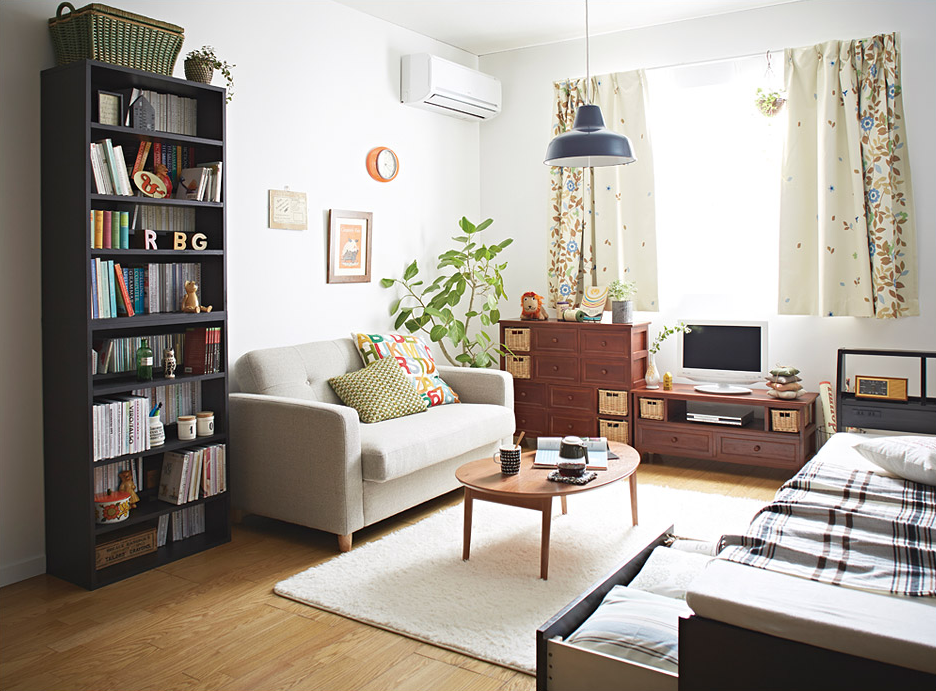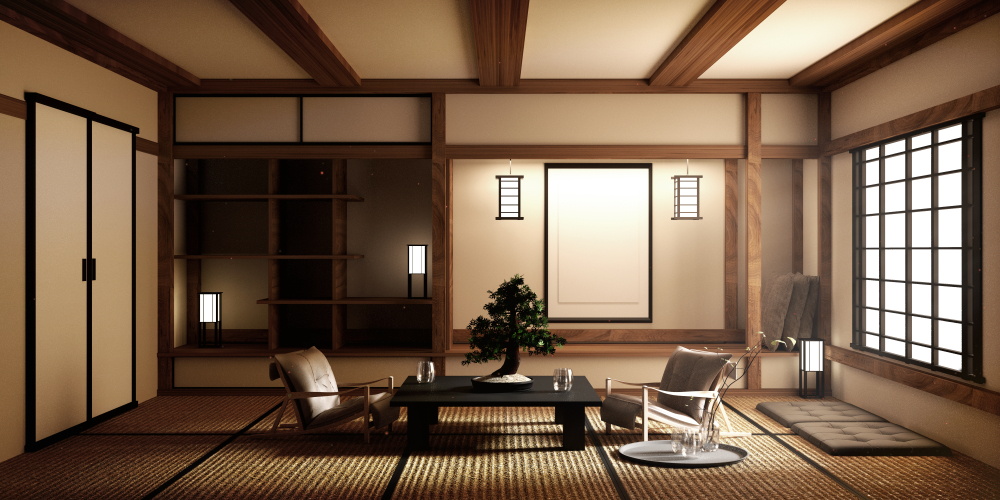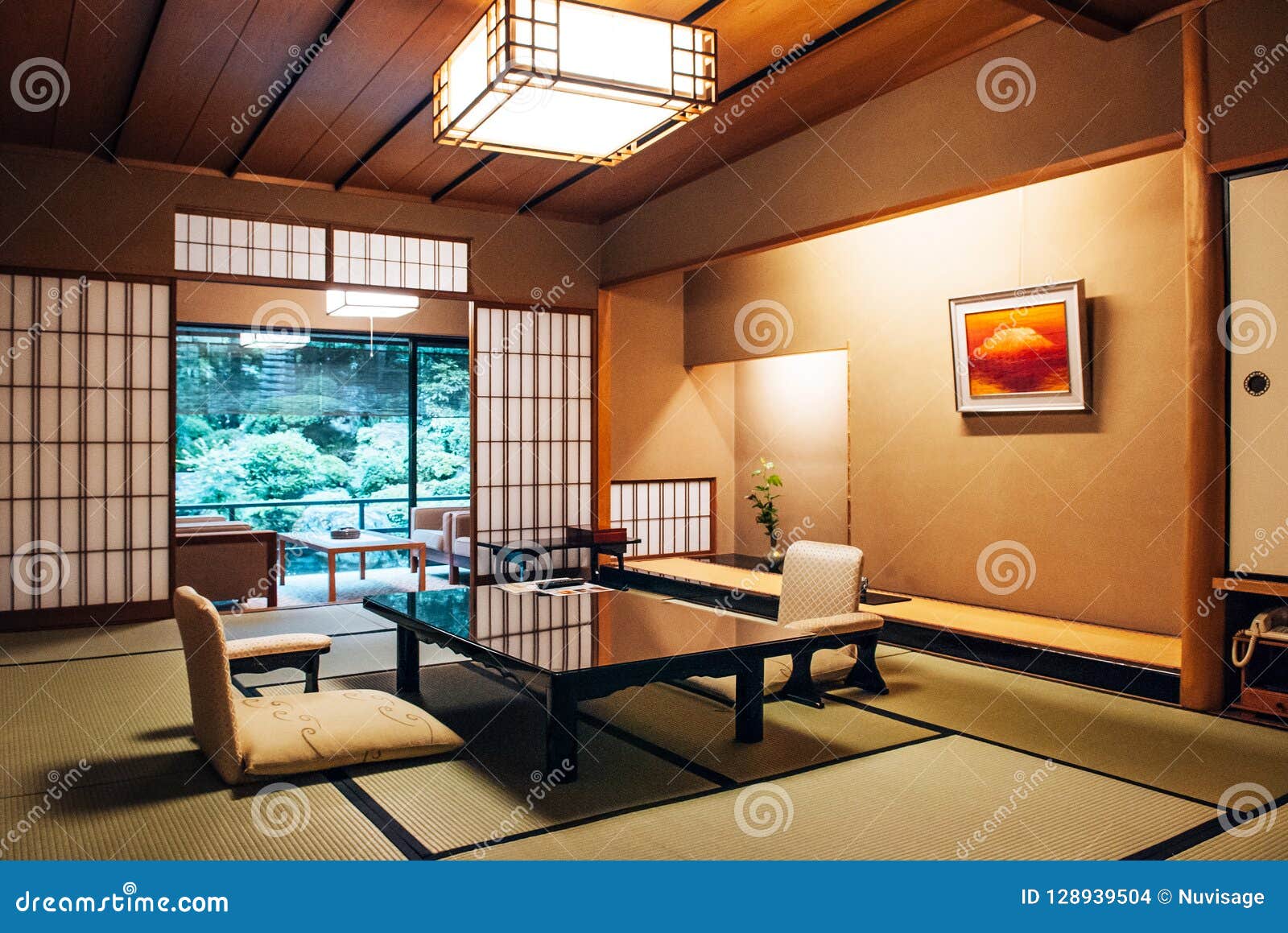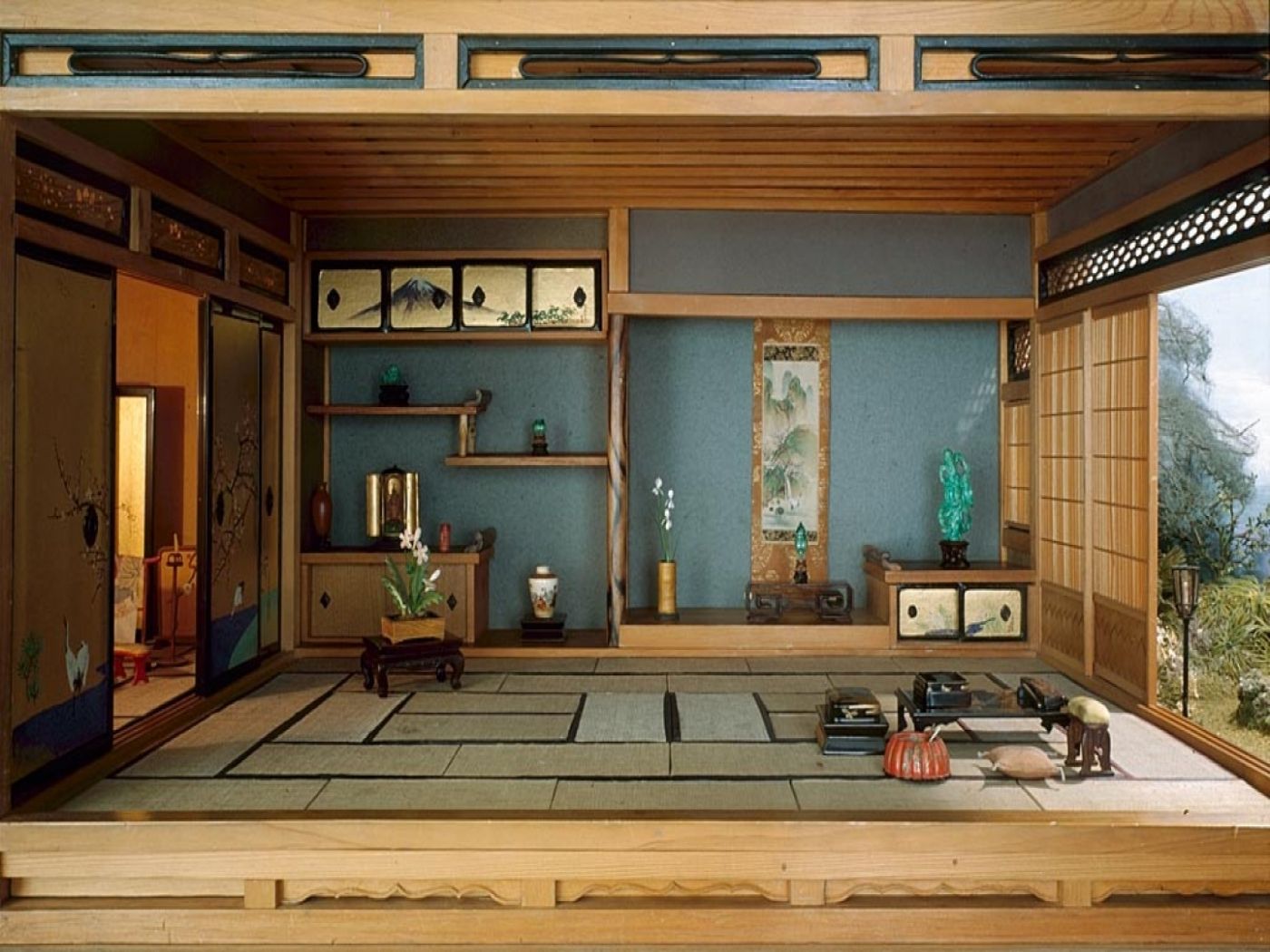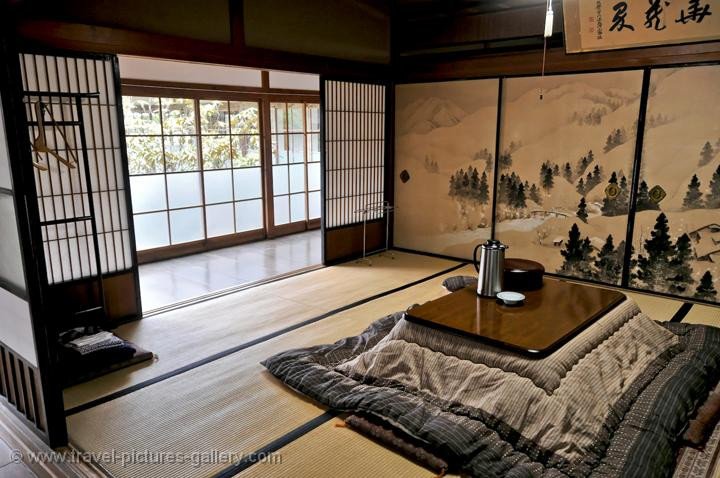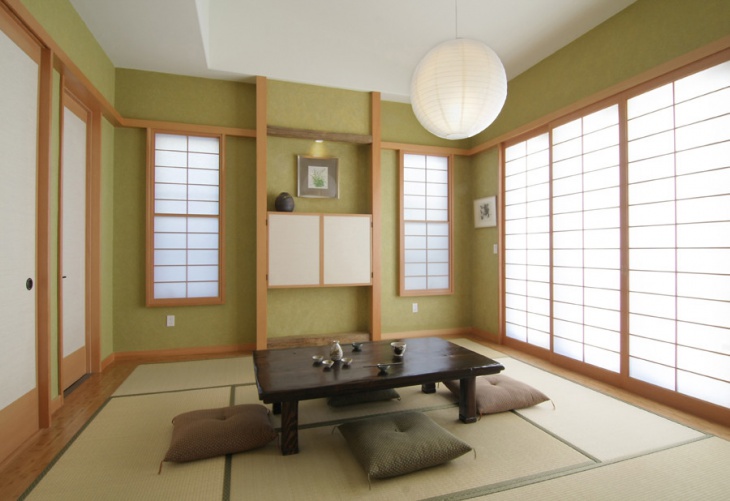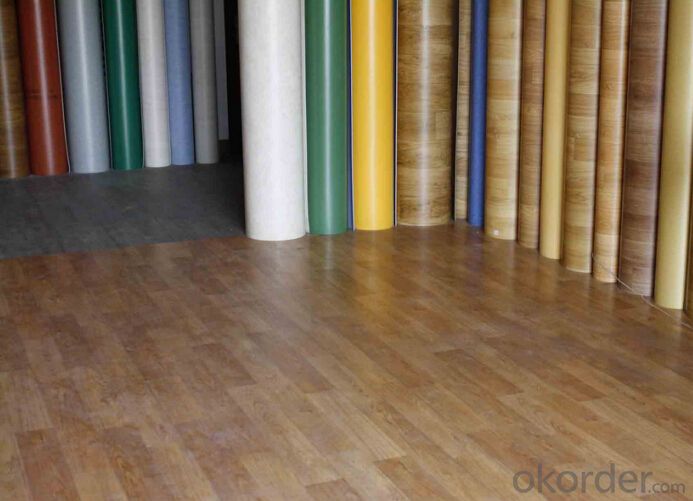The traditional Japanese living room, also known as washitsu, is a beautiful and serene space that reflects the minimalist and harmonious principles of Japanese culture. The design of a traditional Japanese living room has been influenced by many factors, such as the country's climate, religion, and customs. In this article, we will explore the top 10 design ideas for creating a traditional Japanese living room that embodies the essence of Japanese culture.Traditional Japanese Living Room Design Ideas
Furniture plays a crucial role in the design of a traditional Japanese living room. Tatami mats, which are made of rice straw, are used as flooring in a traditional Japanese living room. They provide a comfortable and cushioned surface for sitting and sleeping. Other essential pieces of furniture include futons for sleeping, low tables for dining and drinking tea, and floor cushions for additional seating. All of these pieces are designed to be low to the ground, reflecting the Japanese preference for sitting and sleeping close to the floor.Traditional Japanese Living Room Furniture
The decor of a traditional Japanese living room is simple, yet elegant. Natural materials such as wood, bamboo, and paper are used to create a warm and inviting atmosphere. Shoji screens, which are made of a wooden frame and translucent paper, are used as room dividers and allow natural light to filter into the space. Calligraphy and paintings are also common decorative elements, often placed in alcoves or on walls to add a touch of art and culture to the room.Traditional Japanese Living Room Decor
The interior of a traditional Japanese living room is designed to create a sense of calm and tranquility. The color palette is typically neutral and earthy, with shades of white, beige, and brown dominating the space. The use of natural materials also contributes to the serene atmosphere, as they bring a sense of the outdoors inside. The concept of ma, or negative space, is also essential in Japanese interior design, with the aim of creating balance and harmony in the room.Traditional Japanese Living Room Interior
Tatami mats are an integral part of a traditional Japanese living room. These mats are made of rice straw and are used as flooring in the room. They are not only comfortable to sit and sleep on, but they also have symbolic significance in Japanese culture. The size and number of tatami mats used in a room can indicate its level of formality and importance. For example, in a traditional tea ceremony room, there will typically be nine tatami mats, while a more casual living room may have only four or six.Traditional Japanese Living Room Tatami
Shoji screens are one of the most recognizable elements of traditional Japanese living room design. These screens are made of a wooden frame and translucent paper and are used as room dividers and windows. They allow natural light to filter into the room while providing privacy and a sense of airy openness. Shoji screens can also be used as a decorative element, with intricate designs and patterns often incorporated into the paper.Traditional Japanese Living Room Shoji
The principles of Zen Buddhism heavily influence traditional Japanese living room design. The philosophy of Zen emphasizes simplicity, mindfulness, and harmony with nature. These elements are reflected in the design of a traditional Japanese living room, with its minimalist decor, natural materials, and connection to the outdoors. A traditional Japanese living room is a place for contemplation, relaxation, and finding inner peace.Traditional Japanese Living Room Zen
The traditional Japanese living room is closely associated with the tea ceremony, a ritual that has been practiced in Japan for centuries. In a tea ceremony, the host prepares and serves matcha, a finely ground green tea, to guests in a formal and deliberate manner. The design of a traditional Japanese living room is well-suited to hosting a tea ceremony, with its low tables, floor cushions, and serene atmosphere. The tea ceremony is an essential part of Japanese culture and is a perfect representation of the harmony and simplicity that is valued in traditional Japanese living room design.Traditional Japanese Living Room Tea Ceremony
Sliding doors, also known as fusuma, are another element commonly found in traditional Japanese living rooms. These doors are made of wooden frames and paper and slide on a track to open and close. They are used to divide rooms, creating versatile and flexible spaces. Sliding doors are also an excellent way to bring the outdoors inside, as they can be opened to connect the living room to a garden or outdoor space.Traditional Japanese Living Room Sliding Doors
The concept of zashiki, or floor seating, is an essential part of traditional Japanese living room design. The living room is a place for sitting, relaxing, and socializing, and the use of floor cushions and low tables allows for a more intimate and informal setting. Floor seating also promotes better posture, as it encourages people to sit up straight and use their core muscles, rather than slouching in a chair. Floor seating is a unique aspect of traditional Japanese living rooms that adds to their charm and authenticity.Traditional Japanese Living Room Floor Seating
The Serenity of a Traditional Japanese Living Room
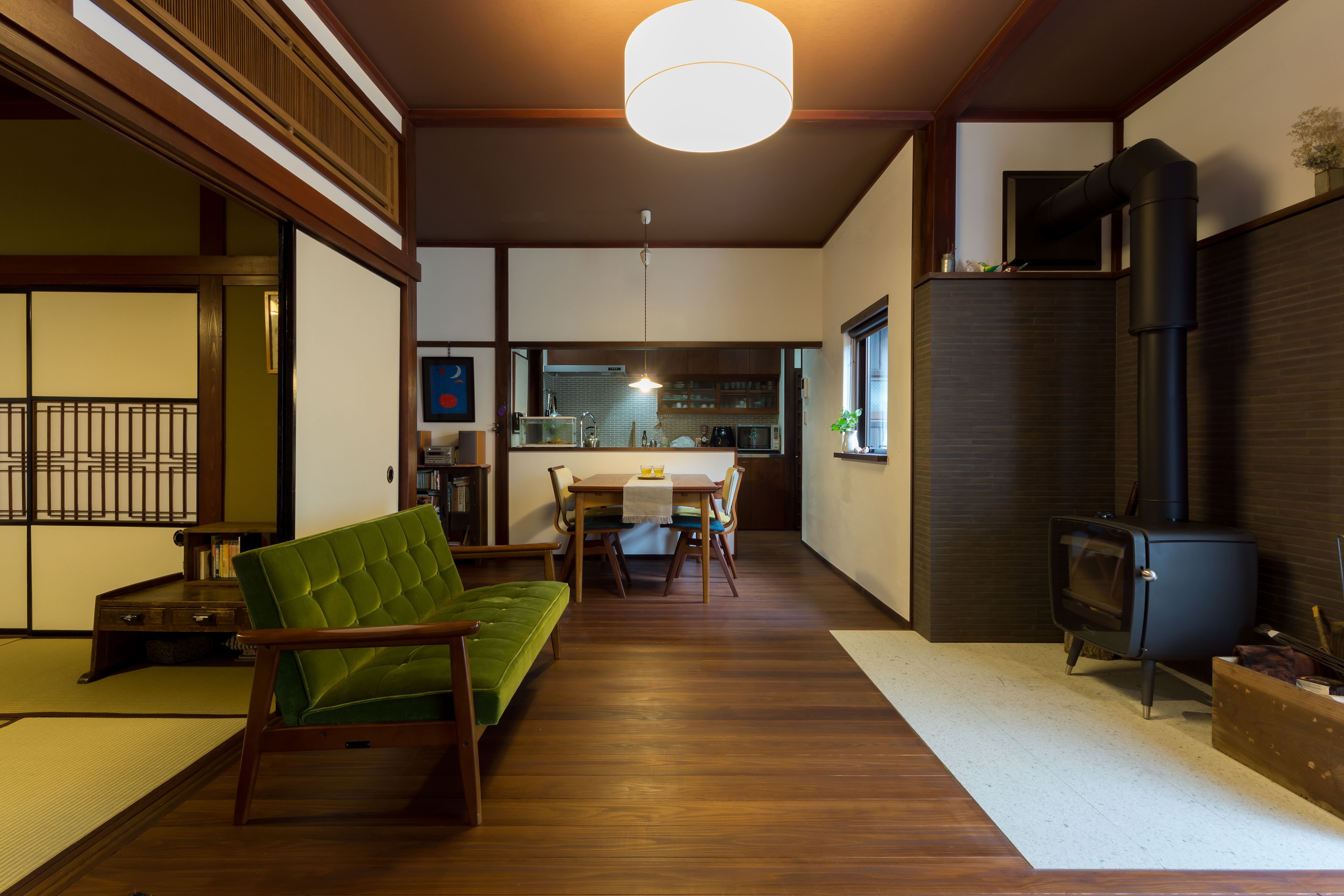
The Essence of Japanese Design
 When one thinks of a traditional Japanese living room, images of minimalist interiors, tatami mats, and sliding shoji screens come to mind. However, the essence of Japanese design goes beyond just these physical elements. It is a reflection of the culture, values, and principles that have been passed down for centuries.
Harmony and Balance
are two key principles that are deeply ingrained in Japanese design and are evident in a traditional living room. The layout and placement of furniture and decor are carefully considered to create a sense of balance and harmony. This is achieved through the use of
feng shui
, which is the art of arranging objects to create a flow of energy and promote positive vibes.
When one thinks of a traditional Japanese living room, images of minimalist interiors, tatami mats, and sliding shoji screens come to mind. However, the essence of Japanese design goes beyond just these physical elements. It is a reflection of the culture, values, and principles that have been passed down for centuries.
Harmony and Balance
are two key principles that are deeply ingrained in Japanese design and are evident in a traditional living room. The layout and placement of furniture and decor are carefully considered to create a sense of balance and harmony. This is achieved through the use of
feng shui
, which is the art of arranging objects to create a flow of energy and promote positive vibes.
Natural Materials and Colors
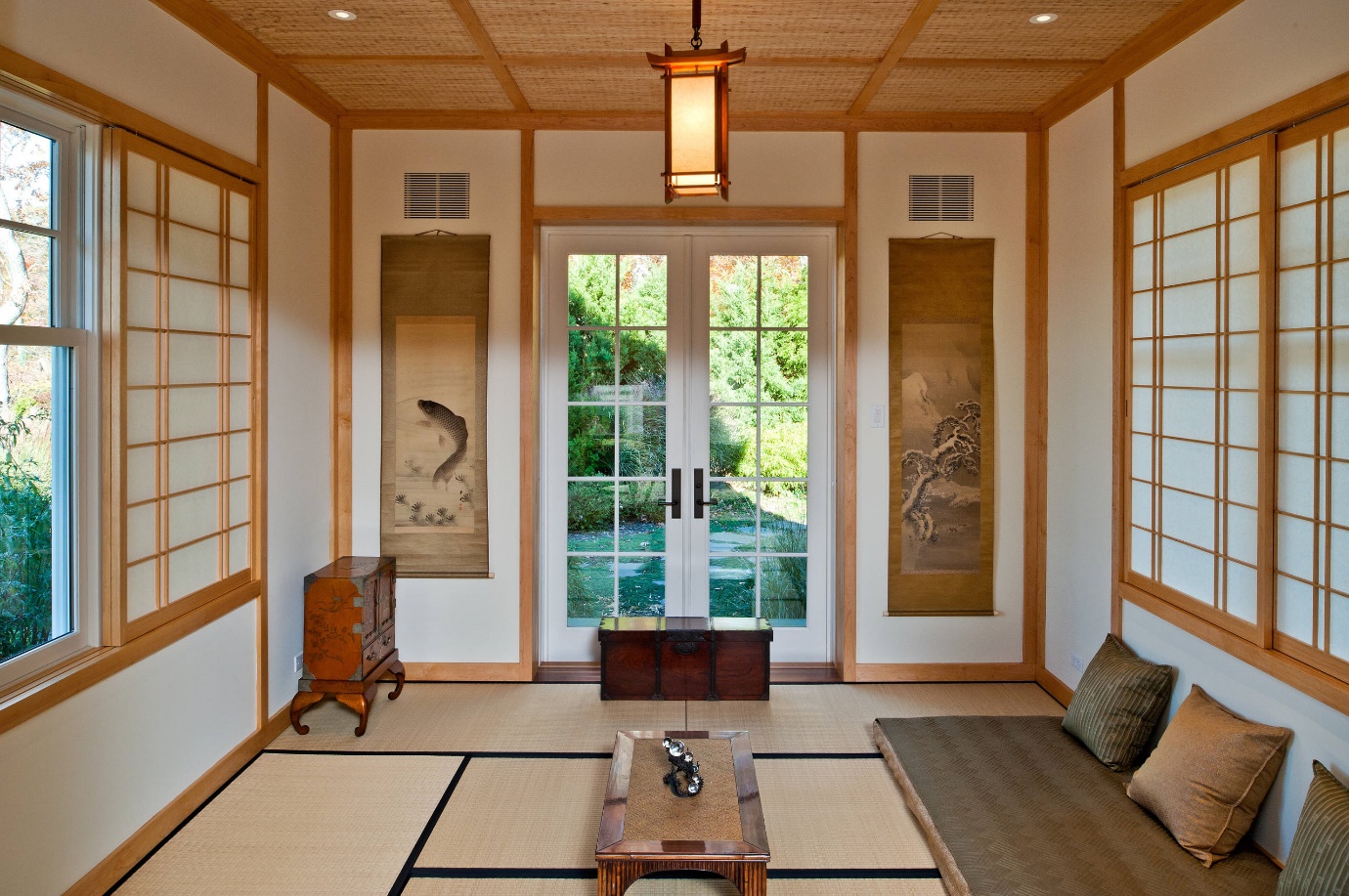 In a traditional Japanese living room, natural materials such as wood, paper, and bamboo are used to create a warm and inviting atmosphere. These materials are not only aesthetically pleasing but also have practical purposes. For example, the use of shoji screens allows natural light to filter through, creating a soft and calming ambiance.
The color palette in a traditional Japanese living room is also carefully chosen to promote a sense of tranquility and connection to nature.
Earthy tones
such as beige, brown, and green are commonly used, with pops of color added through natural elements such as flowers or artwork.
In a traditional Japanese living room, natural materials such as wood, paper, and bamboo are used to create a warm and inviting atmosphere. These materials are not only aesthetically pleasing but also have practical purposes. For example, the use of shoji screens allows natural light to filter through, creating a soft and calming ambiance.
The color palette in a traditional Japanese living room is also carefully chosen to promote a sense of tranquility and connection to nature.
Earthy tones
such as beige, brown, and green are commonly used, with pops of color added through natural elements such as flowers or artwork.
The Art of Wabi-Sabi
 Wabi-sabi is a Japanese aesthetic that embraces imperfection and impermanence. It is the acceptance of the beauty in things that are imperfect, incomplete, and impermanent. This philosophy is reflected in a traditional Japanese living room through the use of rustic and weathered furniture,
handcrafted decor
, and the incorporation of nature. A vase with a single stem flower, a handmade ceramic teapot, or a bonsai tree are all examples of wabi-sabi elements that add character and warmth to the space.
In conclusion, a traditional Japanese living room is not just a physical space but a representation of a culture and way of life. The principles of harmony, balance, and wabi-sabi are deeply embedded in every aspect of the design, creating a serene and peaceful atmosphere for all who enter.
Wabi-sabi is a Japanese aesthetic that embraces imperfection and impermanence. It is the acceptance of the beauty in things that are imperfect, incomplete, and impermanent. This philosophy is reflected in a traditional Japanese living room through the use of rustic and weathered furniture,
handcrafted decor
, and the incorporation of nature. A vase with a single stem flower, a handmade ceramic teapot, or a bonsai tree are all examples of wabi-sabi elements that add character and warmth to the space.
In conclusion, a traditional Japanese living room is not just a physical space but a representation of a culture and way of life. The principles of harmony, balance, and wabi-sabi are deeply embedded in every aspect of the design, creating a serene and peaceful atmosphere for all who enter.






.jpg)





